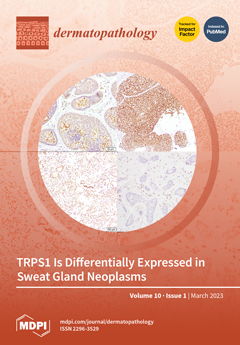Introduction: Autoimmune bullous dermatoses (ABD) represent a heterogeneous group of blistering disorders that may be debilitating with high morbidity. Clinical, histological, and direct immunofluorescence (DIF) studies are essential in establishing an accurate diagnosis of ABD, which is essential for its clinical management. Our study objective was to perform a systematic evaluation of ABD cases in a patient population at an academic medical center in Ho Chi Minh City, Vietnam, and determine the degree of concordance of clinical, histological, and DIF findings in ABD.
Methodology: A systematic retrospective cross-sectional study was performed on 92 patients diagnosed with ABD by clinical, histological, and DIF studies at the University of Medicine and Pharmacy in Ho Chi Minh City, Vietnam, between September 2019 and September 2021. The clinical histories, H and E stained tissue sections, and DIF stains were evaluated by pathologists at the University of Medicine and Pharmacy.
Results: ABD was evaluated as a whole and subdivided into an intraepidermal blister subgroup and a subepidermal blister subgroup. The analysis of paired diagnostic methods (clinical, histological, and DIF) for concordance with the final diagnosis was performed and showed that there were no statistically significant differences between the paired methods (McNemar’s test,
p > 0.05). There was moderate concordance between the clinical, histological, and DIF diagnoses among all ABD cases (Brennan-Prediger coefficient Kappa test, κ
BP = 0.522, CI = 0.95). In the intraepidermal blister subgroup, the diagnostic accuracies of the histology and DIF stains were comparable to each other, and both were more accurate than a clinical diagnosis alone. In the subepidermal blister subgroup, there was no statistically significant difference in each pair of the three diagnostic methods (clinical, histological, and DIF) (McNemar’s test,
p > 0.05). The concordance between the clinical, histological, and DIF diagnoses was high for the intraepidermal blister subgroup (Kappa test, κ
BP = 0.758, CI = 0.95). However, the concordance between the clinical, histological, and DIF diagnoses was slight for the subepidermal blister subgroup (Kappa test, κ
BP = 0.171, CI = 0.95).
Conclusion: Histological evaluation is highly accurate in the diagnosis of the intraepidermal blister subgroup, but it is not as accurate in the diagnosis of the subepidermal blister subgroup in the Vietnamese patient cohort in which clinical, histological, and DIF studies were performed. DIF stains are a crucial diagnostic tool for ABD in this patient population.
Full article





